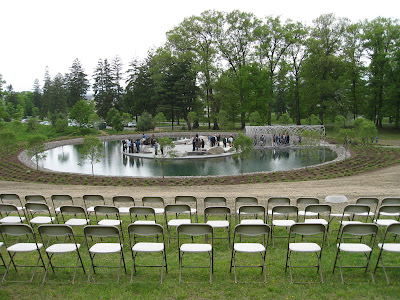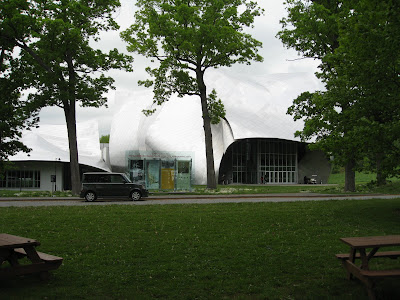2009
Lost! It was a crushing moment because then and only then did I realize that my true métier isn’t actual but virtual painting with the iPhone app called Brushes, and the masterpieces I’d made with it were gone forever. I love my Brushes “paintings”—really paintings over photos, just like Gerhard Richter—but have had to reluctantly acknowledge that yet again, the thing I do best has no material application. I thought they’d make great Iris prints, so emailed them off to a friend who has a gallery and does such things, but she was not impressed. That may change, however, and Brushes may yet become respectable, because it turns out that this week’s New Yorker cover by Jorge Columbo was done on an iPhone with Brushes. You can see it here, with a step-by-step video of how he drew it (makes it look easier, though, because it doesn’t include the “undos”)
Here are two of mine, which I was smart enough to save:


With few exceptions (the one for me being Cyprien Gaillard’s 30-minute video Desniansky Raion—fueled by the electro-pop music of Koudlam, it’s a hypnotic ballet of images of social devastation wreaked by public housing) much of "Younger than Jesus" looks like an extreme version of Show and Tell (if anyone does actually make something, it's with tongue implanted in cheek) which might not be surprising for an age-group raised on praise. As one of my graduate students at SVA put it, “Everything we did was put up on the refrigerator.” MFA programs have continued the praise game—or at least the encouragement game—because to discourage a student would be to cut off a significant source of revenue.
Clip from Cyprien Gaillard's Desniansky Raion
Through its music we know that this generation has verve, energy, and innovation to burn, coming up in the world at a time when technology has not only extended music-making capability, but liberated music distribution from the corporate stranglehold—while visual art remains filtered and controlled by institutions driven by agendas that have little to do with quality. The lowered bar and limited lens has to be discouraging to those twenty-something visual artists who have something new and valid to contribute (some of whom—like Kehinde Wiley—may, gasp, still take painting seriously). Historically art has tended to thrive when real estate prices are low (New York’s Downtown scene in the eighties, the more recent migration of artists to low-rent Berlin), so if we’re lucky, the economic downturn will result in increased opportunities for artists to take things into their own hands.
I’m not sure what—other than a sensationalist marketing tool—the reference to Jesus is all about, but another comparison might be “older than Artemisia Gentileschi” –who made this painting at 16:
 Susanna and Her Elders (1610) Artemisia Gentileschi (1593-1653)
Susanna and Her Elders (1610) Artemisia Gentileschi (1593-1653)


Middle photo: Photo: Olafur Eliasson Studio
The latticework pattern mimics that of the ripples in the pond. Did he know it would do that?


The Eliasson installation is adjacent to the Frank Gehry designed Fisher Center for the Performing Arts, a building I love for its quality of lightness and insubstantiality, heightened on this overcast day so that the roof of the building seemed to merge with the sky.


Sadly, this lyrical dance of wing-like curves and light ends abruptly with the rear of the building, which is as square and clunky as the back of any urban theater. Although I've been to the Fisher Center several times, I'm never prepared for the nasty slap of reality that awaits me as I walk around it to my parked car. I want to believe in the fairy tale.

I can also tell you that their father and I brought two sons into functioning adulthood without any of that crap—and it’s something they’ve continually thanked us for.
Although Matt's the music professional, my most vivid early memories of my children and music have to do with his younger brother, Adam, probably because of the dark winter when Adam was two and had pneumonia, which meant long weeks inside with just mom and the stereo. He spent hours dancing to the Beatles in front of the speakers, identifying which side of the album he wanted to hear by pointing to the cut or whole apple illustrated on the label. Among his other favorites were Bob Marley's “I shot the sheriff but I didn’t shoot the dead tree” and Paul McCartney’s “Man on the Rug." I remember trying to tear him away from Elton John’s "Goodbye Yellow Brick Road" when we were late for a doctor appointment, by promising that we’d listen to the radio in the car. He was screaming “Yellow Brick Road! Yellow Brick Road!” as I carried him out and once in the car, insisted on hearing it there. I tried to explain that the radio played what it wanted, not what we wanted, but lost all credibility when I turned it on to find it playing—of course—“Yellow Brick Road.”
This all comes to mind as I’ve recently been spending much delightful time with various friends’ toddlers, loving the way 1-4 year olds are so trustingly imitative while remaining true to their emerging personalities—a combination that’s often hilarious. Then this morning Cary Smith sent me the link to this video of Thom Yorke singing the Radiohead classic “Weird Fishes” with orchestra (wait for the sound to start)…
…after which I found this, and it cracks me up:
Don't skip over the song links to the music videos above, each one better than the next, ending with Elton John accompanied by Muppets, the Sesame Street album being a big exception to my rule—because I enjoyed it. Happy parents, I always think, make for happy children. And why not give them something that enriches not only their present, but future life?
…style is optimism made visible. Style presumes you are a person of interest, that the world is a place of interest, that life is worth making the effort for….
As the speed of all our transactions increases, we need fast ways of transmitting information about ourselves without losing authenticity; we have less and less time to make our mark in other, more leisurely ways of knowing. Style, like a perfectly-fitting book jacket, evokes the substance within by way of the surface. It makes an authentic visual impression in a world that otherwise strips people of identity. There was a time when style was a luxury. Today it is a necessity.
Yes, because finally, in the 21st century, it appears that “style” is becoming the new “fashion.” And hooray for that! Starting with the vogue for unusual children’s names (which make it easier to be found on the Internet), individuality is key—when everyone used to think that in the “future” (which we happen to be living in) we’d all be running around like so many Spocks in identical silver tights.
Anyway, just thinking about style being “optimism made visible” cheers me up, as do the new, soft, white organic cotton pajamas (with wooden buttons!) I’m wearing while stuck at home with the nasty cold I’ve had since Chicago. The interesting thing is that while I know I have style (although am less concerned about making an impression than pleasing myself—no one can see me in my pajamas), I want a different style. I want to be funky, like my friend, Jude, but over the years have had to come to terms with the fact that I’m simply not funky. Just the way I want to be an expressionist painter and must reconcile myself to being…me. Oh well.

